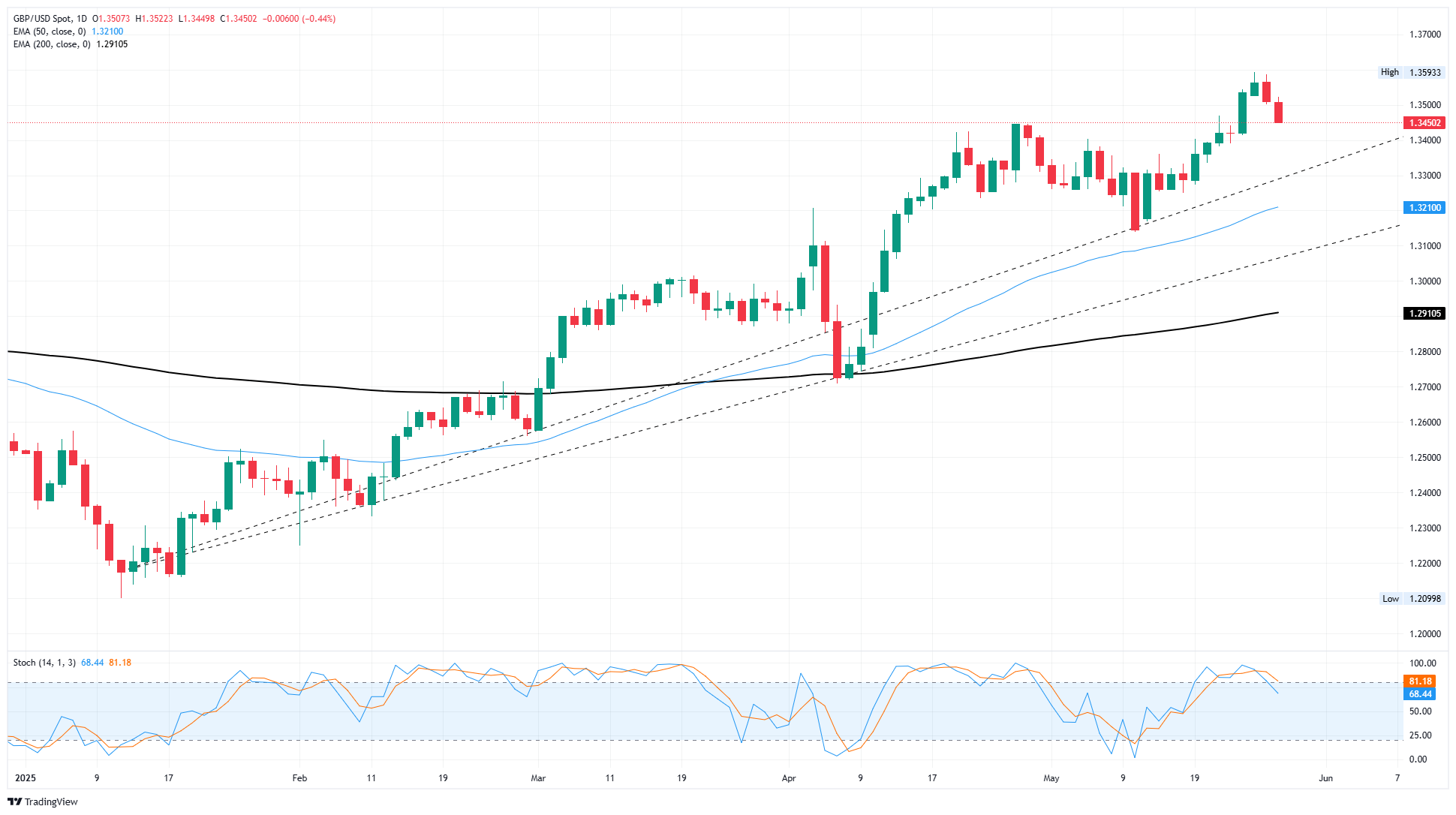GBP/USD hits a second day of downside ahead of key US data
- GBP/USD fell for a second consecutive session as Cable bets pull back.
- The UK side of the data docket remains light for the remainder of the week.
- Fed Meeting Minutes revealed a staunchly apprehensive Fed, key US data ahead.
GBP/USD pared further gains on Wednesday, stumbling for a second straight session and easing back below 1.3500 after a failed attempt to recapture 1.3600 earlier this week. Sterling markets are pulling back from the top end of a bull run that dragged Cable into multi-year highs, however momentum still favors Pound Sterling bidders.
The Federal Reserve's (Fed) latest Meeting Minutes from the Federal Open Market Committee's (FOMC) rate meeting on May 6-7 revealed that the Fed's wait-and-see approach has deep roots. Policymakers at the latest Fed meeting noted that the US Dollar's (USD) safe-haven status has taken a hit recently. They cautioned that a more "durable shift" in the Greenback's status could have lasting impacts on the US economy.
Nearly all FOMC members at the May rate meeting agreed that inflation risks could prove to be more "persistent than expected". With Fed staff directly citing tariff impacts as a key driver in the FOMC's weakening outlook on the US economy, the FOMC has laid decaying US economic conditions and the hazy outlook on inflation and growth at the feet of the Trump administration's whipsaw tariff policies.
The rest of the trading week remains heavy on the US side. US Q1 Gross Domestic Product (GDP) growth is slated for Thursday. Friday will wrap up the trading week with US Personal Consumption Expenditure Price Index (PCE) inflation data for April. Markets are hoping for a continued easing in key inflation metrics before the fallout from the Trump administration’s tariff policies begins to leak into headline datasets.
GBP/USD price forecast
Cable remains caught in a bearish downturn with bids sinking into 1.3450. However, price action remains firmly planted in bull country, with daily candlesticks running well north of the 50-day Exponential Moving Average (EMA) near 1.3210.
Overall, the Pound Sterling has been on a tear in 2025, rising 11.3% bottom-to-top from mid-January’s multi-month bottoms at the 1.2100 handle. Cable has entirely reversed losses through the last quarter of 2024, rising to multi-year highs near 1.3450 this week.
GBP/USD daily chart

Pound Sterling FAQs
The Pound Sterling (GBP) is the oldest currency in the world (886 AD) and the official currency of the United Kingdom. It is the fourth most traded unit for foreign exchange (FX) in the world, accounting for 12% of all transactions, averaging $630 billion a day, according to 2022 data. Its key trading pairs are GBP/USD, also known as ‘Cable’, which accounts for 11% of FX, GBP/JPY, or the ‘Dragon’ as it is known by traders (3%), and EUR/GBP (2%). The Pound Sterling is issued by the Bank of England (BoE).
The single most important factor influencing the value of the Pound Sterling is monetary policy decided by the Bank of England. The BoE bases its decisions on whether it has achieved its primary goal of “price stability” – a steady inflation rate of around 2%. Its primary tool for achieving this is the adjustment of interest rates. When inflation is too high, the BoE will try to rein it in by raising interest rates, making it more expensive for people and businesses to access credit. This is generally positive for GBP, as higher interest rates make the UK a more attractive place for global investors to park their money. When inflation falls too low it is a sign economic growth is slowing. In this scenario, the BoE will consider lowering interest rates to cheapen credit so businesses will borrow more to invest in growth-generating projects.
Data releases gauge the health of the economy and can impact the value of the Pound Sterling. Indicators such as GDP, Manufacturing and Services PMIs, and employment can all influence the direction of the GBP. A strong economy is good for Sterling. Not only does it attract more foreign investment but it may encourage the BoE to put up interest rates, which will directly strengthen GBP. Otherwise, if economic data is weak, the Pound Sterling is likely to fall.
Another significant data release for the Pound Sterling is the Trade Balance. This indicator measures the difference between what a country earns from its exports and what it spends on imports over a given period. If a country produces highly sought-after exports, its currency will benefit purely from the extra demand created from foreign buyers seeking to purchase these goods. Therefore, a positive net Trade Balance strengthens a currency and vice versa for a negative balance.

